With an aim to cover every class and one-off engines, here at RailAdvent, we are launching another series called “Lost Class”.
As the name implies, this new series will be looking at classes were no locomotives have been preserved and at present have no projects set up to build a new member of the class. The first article of the series is based on the Great Western Railway’s only 4-6-2 ‘Pacific’ engine, No.111 “The Great Bear”.
GWR No.111 “The Great Bear”
By 1907, Churchward was very pleased with both the 29XX ‘Saints’ and 40XX ‘Star’ classes he had introduced on the GWR to haul the fastest and heaviest trains. At the time, they could handle these trains with ease. This is where the confusion comes, why was “The Great Bear” built? Over the past century, many GWR enthusiasts have thought about this question, with many answers being suggested over the years. The two most likely explanations are:
- Further Experiment / Test – Churchward had conducted many trials and tests in order to develop a fleet of locomotives suitable for the GWR’s needs. His main philosophy was the boiler is the key component in a steam locomotive. With this philosophy and having produced the successful Swindon No.1 boiler, No.111 can be seen as a trial for a larger boiler. His current fleet of locomotives would most likely become unsuitable for traffic demands in the future, with “The Great Bear” an experiment to test bigger boilers which would be needed in the future. The Swindon No.6 boiler of 111 could produce large amounts of steam, suitable for long-haul trains, this being shown in service.
- PR Material – Alternatively, many people think the idea of “The Great Bear” came from the directors. The competition was high with other railway companies, with the Marketing Departments always looking for new PR material to use. On the success of the ‘Stars’, the directors of the GWR could have asked for an enlarged ‘Star’ to be built. To further boost PR from the engine, the 4-6-2 ‘Pacific’ could be used. At the time, no other standard gauge engine in England had this wheel arrangement, therefore attracting much attention and interest.
We will never know the true reason, but we do know the engine was completed at Swindon Works in February 1908.
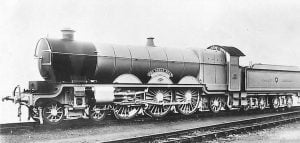
On mechanical grounds, 111 followed the same basic design as the ‘Star’ class. The main differences being the large Swindon No.6 specially built for the engine and rear part of the locomotive, where a trailing truck was fitted. The ‘Star’ cylinder block was altered by having 15in diameter cylinder bores (later fitted as standard to the ‘Stars’) and smokebox saddled adjusted to take the larger diameter No.6 boiler.
The basic dimensions of the engine include: 4-6-2 wheel arrangement (coupled wheels – 6 foot (ft) 8 1/2 inch (in), leading bogie – 3ft 2in and trailing truck – 3ft 8in), Swindon No.6 boiler pressed at 225 lbf/in2, four cylinders (two inside and two outside) (15 in diameter and 26 in stroke) worked by Walschaerts valve gearing, total weight came in at 97 long tons (engine only) and a tractive effort of 27,800 lbf (GWR Power Class ‘+’).
Performance in Service
Although based on sound engineering, in practice “The Great Bear” was very impractical and suffered many mechanical faults. Before the engine could even enter service, heavy route restrictions were placed on it by the Civil Engineer, so strict that the only route 111 was authorised to run over was the original GWR Bristol to London Paddington mainline. This was due to the heavy axle loading of 20 tons on the coupled wheels, which majority of lines couldn’t handle in 1908. The engine spent its entire life-based at Old Oak Common, the depot for Paddington Station.
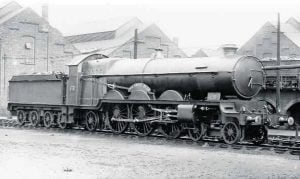
After only a short spell in revenue earning service was 111’s design flaws noticed. Firstly, the trailing truck’s axleboxes were prone to overheating. This was due to them being inside bearings, which reduced air flow to cool them and also increased exposure to heat from the firebox. Secondly and more importantly was the boiler. Greater efficiencies were hoped to be achieved from the huge tube surface area, but in practice this was not the case, proving to provide only minimal gains in efficiency. The long firebox needed longer fire irons, which crews found a problem when lifting them in and out the firebox. This lead to a reduced cab roof length, at the cost of even less weather protection. Modifications were made to the boiler, such as changes to the superheating, tube diameter, and top feed added.
The large boiler did prove useful for the night freight trains out of Paddington. The boiler produced and maintained a huge reserve of steam, perfect for the heavy, fast and long-haul freight trains, as “The Great Bear” always had the steam to keep the train going. Due to this, 111 was mostly just employed on this train.
Decline and Withdrawal
With the start of World War 1, further development of the engine ceased despite the need for more improvements. “The Great Bear” did provide useful data when the Operating Department require a large engine for hauling heavy fast freight trains, leading to the design and construction of the 47XX 2-8-0s class in 1919 (More information on this class can be found here).
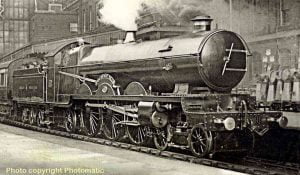
Collett replaced Churchward as Chief Mechanical Engineer in 1922, with 111 still in operation. The time had come for larger express engines, with the 4073 ‘Castle’ class entering into traffic in 1923. These engines were enlarged ‘Stars’ with 4-6-0 wheel arrangement and a number of minor modifications and updates. Tractive effort was increased by roughly 5,000 ibf more than the 111’s, removing its power claim. With this and heavy firebox repairs needed Collett used this as support in withdrawing the engine. Early 1924 saw 111 “The Great Bear” rebuilt into a ‘Castle’ class, with “The Great Bear” being the GWR’s first and last locomotive to feature the 4-6-2 wheel arrangement.
Preservation
When mentioned in the 21st century, many people would like to see a replica in steam and running. Realistically, the design has too many faults and too big for modern heritage railway’s needs to be built again. There are several GWR new build projects already in progress, from classes which are ideal for 21st century needs.
We hoped you enjoyed the start to our new series looking at lost classes. We aim to try and complete an article of this series for every Wednesday, but this will depend on time constraints both me and Michael are facing.
Have a class in mind you would like to see featured? Comment below and it may feature in our next installment of the series!
- Visit the RailAdvent news homepage
For the latest railway news - Visit the RailAdvent Shop
For railway related goodies! - Visit LocoStop – Our New Social Network
Come and share your photo’s and video’s, join the discussion.
Find out what others are sharing


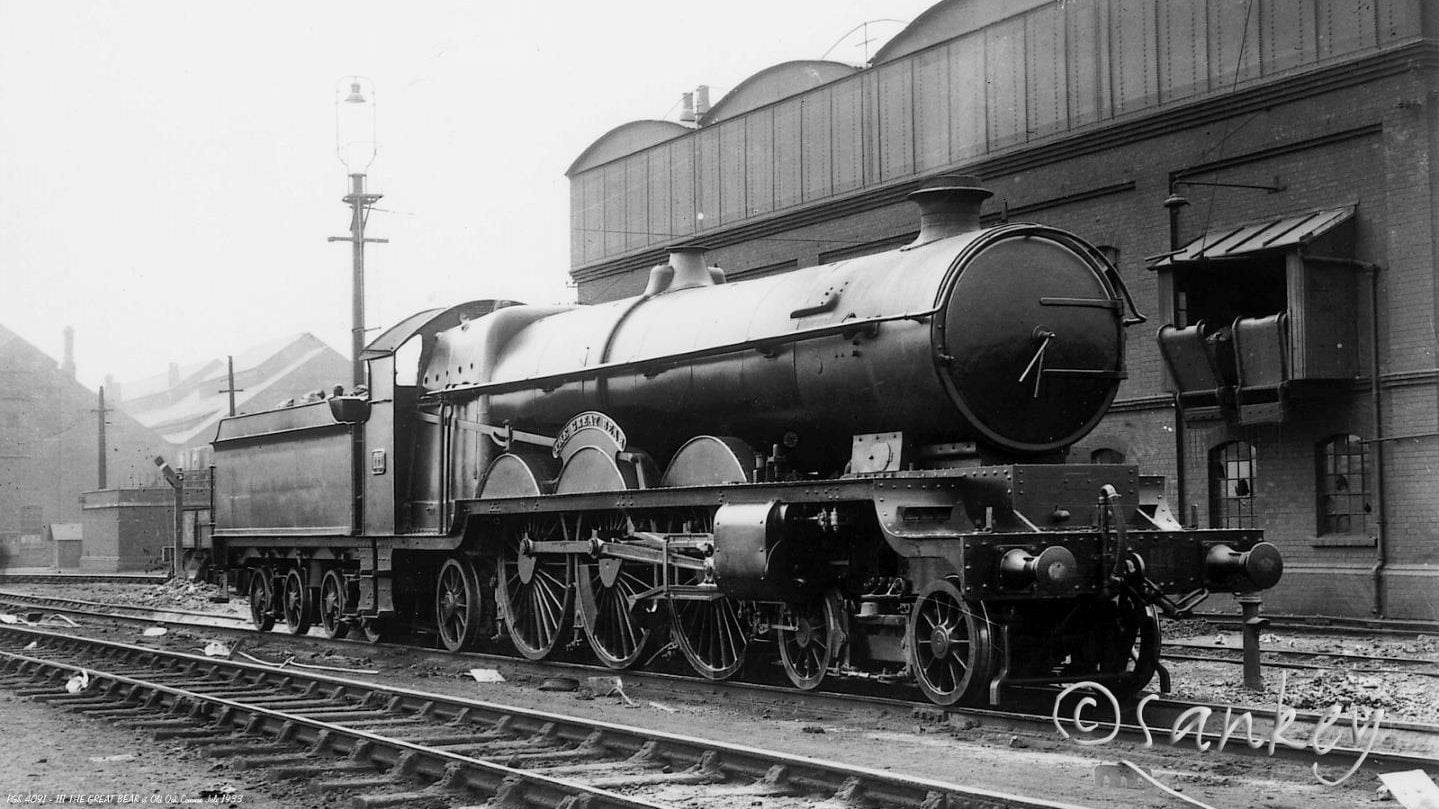


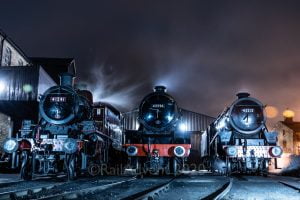
Responses
Very interesting article re No. 111 ” The Great Bear”. Churchward was forever experimenting With 70B Feltham forming the backdrop to my interest in steam locos, I would love to see a Urie H16 4-6-2T Rebuild!!!
LBSCR E2
[…] hope you have enjoyed this week’s Class Information (and new Lost Class series, more information here), stay tuned for next week’s […]
Great article. I had only ever seen one photo of the great bear till now. Interesting about the firebox length and the poor crew pushed out the back into the rain ! I had heard the pony truck overheated but interesting to learn why. The missed train that I love is the Stroudley D1 0-4-2 particularly how one survived at a colliery to 1954. Great series.
Perhaps the Gwr county tanks
How about “Kruger” 26xx, another lost class with very short lives and the number series quickly reused for the Aberdares.